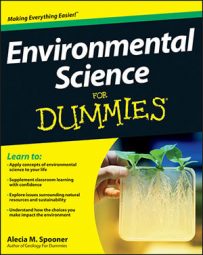The most common question that people ask when confronted with all the scientific data about global climate warming is how scientists can be certain that humans are responsible for the increase in greenhouse gases, specifically carbon dioxide. The answer to this question is isotopes.
What are isotopes and carbon ratios?
An isotope is an atom of an element that naturally occurs with a different number of neutrons. For example, carbon most often has an atomic number of 12 (6 protons and 6 neutrons) and is labeled by scientists as carbon-12 or 12C.
But other atoms of carbon exist with different numbers of neutrons (carbon-13 or 13C has 6 protons and 7 neutrons and carbon-14 or 14C has 6 protons and 8 neutrons). You may have heard of 14C because it’s the isotope that decays over time and that scientists use in radiocarbon dating.
Carbon atoms are constantly cycling through living and nonliving matter. When plants take carbon atoms from the atmosphere during photosynthesis, they absorb a greater number of 12C atoms than 13C atoms because the 13C atoms are slightly heavier in mass and react a little differently in chemical reactions.
Environmental scientists measure the isotope signature of living and nonliving things by comparing 13C to 12C isotopes. This proportion, or ratio, of carbon isotopes (13C/12C) in plants is different from the ratio of carbon isotopes in the atmosphere. Because most plants prefer the 12C isotope, the ratio of 13C/12C in plants is lower than the ratio of 13C/12C in the atmosphere (where no biological process chooses one isotope over the other).
Burning plant material or fossilized plant material, such as fossil fuels, releases the 12C isotopes that plants absorbed through photosynthesis millions of years ago into the atmosphere in the form of CO2 molecules. The added 12C isotopes in the atmosphere decrease the overall 13C/12C ratio.
Environmental scientists compare the ratio of carbon isotopes in the atmosphere today to the ratio of carbon isotopes in the atmosphere over the last couple thousand years. (Fortunately, ice cores in Greenland and Antarctica have been trapping bubbles of atmospheric gas for thousands of years!)
What scientists have found is that while the total amounts of CO2 in the atmosphere have increased, the ratio of 13C/12C has gotten much lower since 1850 — right around the time when humans began burning fossil fuels for energy during the Industrial Revolution.
Have carbon ratios shifted?
Before humans began burning fossil fuels, the carbon ratios naturally shifted about 0.03 percent over a couple thousand years. Over the past 150 years (since humans began burning fossil fuels), the carbon isotope signature of the atmosphere has shifted more than 0.15 percent.
Although this percentage appears small, it’s five times more than the natural shift. Scientists consider a change that big to be significant, or beyond what would occur due to random chance.
A significant change means that something different is acting in the system to change things from what has been normal for the past 10,000 years or so. The something different in earth’s climate system is human industrial innovation and its ability to pull carbon from deep in the earth and inject it into the atmosphere.
The question scientists are asking today is no longer if human actions have led to increasing greenhouse gases and a warmer climate but rather what now? What will a warmer climate mean for human civilization? And how can humans use their powerful influence on the earth’s climate system to conserve the resources and way of life they’ve depended on for thousands of years?
To answer questions about how increasing GHGs will affect earth’s climate in the future, scientists look into the past to see whether a situation similar to today has ever existed before.

